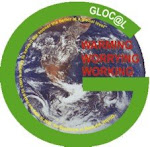QUESTIONNAIRE
Select the correct answer to the following questions.
1.The average global temperature has risen by how much in the past 100 years?
6° Celsius (1° Fahrenheit)
2° Celsius (4° Fahrenheit)
0.7° Celsius (1° Fahrenheit)
Source: http://encarta.msn.com/encyclopedia_761567022/global_warming.html
2. How much water is wasted by a running tap?
20 litres (5 US gallons) per minute10 litres (5 US gallons) per minute
6 litres (1.5 US gallons) per minute
1 litre (0.3 US gallons) per minute
Source: http://www.niwater.com/usingwaterwisely.asp .
3. How long does it take a tin can to break down in a landfill?
5 years50 years
100 years
500 years
Source: http://www2.ljworld.com/news/2008/apr/17/break_it_down_how_long_does_trash_take_degrade/
4. Which of the following is an example of a renewable energy source?
WindOil
Fish
Coal
Source: http://www.eia.doe.gov/neic/brochure/renew05/renewable.html
5. Which of the following is not a renewable resource?
TimberWild mushrooms
Fish
Gold
Source: http://www.scs.sk.ca/vol/HTT/RR/Minerals.htm
6. The greatest danger facing most endangered species is...
Habitat lossHunting
Capture for the pet trade
Disease
Source: http://www.funtrivia.com/playquiz/quiz9151e1f0.html
7. Which of the following substances is not biodegradable?
PaperFood refuse
Styrofoam
sawdust
Source: http://www.funtrivia.com/playquiz/quiz9151e1f0.html
8. What environmental problem is the result of chemical reactions in the atmosphere that involve sulfur?
SmogDeforestation
Acid rain
Holes in the ozone layer
Source: http://www.funtrivia.com/playquiz/quiz9151e1f0.html
9. What chemicals have been banned in most of the world because of their role in destroying the ozone layer?
ChlorofluorocarbonsPeroxides
Metal oxides
DDT
Source: http://www.funtrivia.com/playquiz/quiz9151e1f0.html
10. Which of the following practices produces the most organic water pollution?
Humans bathing in the waterPaper mills
Intensive livestock farming
Recreational boating
Source: http://www.funtrivia.com/playquiz/quiz9151e1f0.html
11. 'Ecology' comes from two Greek words meaning...
Study of the worldStudy of the house
Nature study
Natural life
Source: http://www.funtrivia.com/playquiz/quiz9151e1f0.html
12. There are many different types of animals and plants, and they live in many different types of environments. What word is used to describe this idea?
multiplicitybiodiversity
socio-economics
evolution
Source: http://www.epa.gov/Region3/ee/quiz2.htm
13. Which of the following is a renewable resource?
oiliron ore
trees
coal
Source: http://www.epa.gov/Region3/ee/quiz2.htm
14. Which of the following household materials is considered hazardous waste?
plastic packagingglass
batteries
spoiled food
Source: http://www.epa.gov/Region3/ee/quiz2.htm
Complete the sentences http://www.funtrivia.com/quizzes/sci__tech/environment.html
1. Name three R’s we use to help preserve the environment? Reduce, reuse, recycle
2. What country produces and consumes the most energy in the world? USA http://www.worldpopulationbalance.org/pop/energy/
3. What important element for humans do plants produce as a result of going through the process of photosynthesis? (oxygen)
4 The most common major cause of pollution of streams, rivers and oceans is: Intensive livestock farming
5. What is the name of the process by which the earth warms up as a result of warmth from the sun being trapped by the atmosphere? (The greenhouse effect)
6. Having ozone in the earth's upper atmosphere protects us from: (dangerous rays from the sun; ultraviolet light, known as UV-C and UV-B)
7. What is the most common reason that animal species become extinct? (habitat loss)
8. Where does most household garbage eventually end up once it leaves the home? (In a landfill)
9. How much of the earth’s water is freshwater? (2.5 - 3%) check out the site to see how much of this is actually readily available- you’ll be shocked. http://www.lenntech.com/specific-questions-water-quantities.htm
10. How much of the world's total population experiences water shortages? (Over 40% of the world's population) see the same site as above
Match the items in Column A with how long they last in the environment in Column B! source http://www.epa.gov/Region3/ee/quiz.htm
| . Leather | a. 20 years |
| 1. Leather | d. 50 years |
1. How much trash does a person generate each day
2. How many trees does it take to keep a baby in disposable diapers from 0-2 years?
3. How many aluminium cans does the average person in the US use in a single year?
4. How many times can aluminium cans be recycled?
5. If you lined up all the Styrofoam cups made in one day, how far would the line reach?
6. Which of these has contributed to the hole in the ozone layer?
7. Where do you use most of the drinkable water in your house?
1.(b) Each person generates about 3-5 pounds of trash each day.
2.(c ) It takes about 20 trees to keep a baby in disposable diapers from 0-2 years.
3.(c) The average person uses approximately 1,500 aluminum cans a year in this country.
4.(c) Aluminium cans can be recycled billions of times.
5.(b) If you lined up all the styrofoam cups made in one day, it would reach around the Earth.
6. All three (styrofoam, aluminum cans & refrigerators) have contributed to the hole in the ozone.
7.(c) You use most of the drinkable water in your house in the bathroom
Source : http://www.epa.gov/Region3/ee/quiz.htm
Bath: 50 gallons
Shower: 2 gallons per minute
Teeth brushing: 1 gallon
Hands/face washing: 1 gallon
Face/leg shaving: 1 gallon
Dishwasher: 20 gallons/load
Dishwashing by hand: 5 gallons/load
Clothes washing (machine): : 10 gallons/load
Toilet flush: 3 gallons
Glasses of water drunk: 8 oz. per glass (1/16th of a gallon)
A dripping tap wastes at least 5,500 litres of water a year:
| Gallons (U.S.) | Liters | Gallons (U.K.) |
| 0.50 | 1.89 | 0.42 |
| 1.00 | 3.79 | 0.83 |
| 1.50 | 5.68 | 1.25 |
| 2.00 | 7.57 | 1.67 |
| 2.50 | 9.46 | 2.08 |
| 3.00 | 11.36 | 2.50 |
| 3.50 | 13.25 | 2.91 |
| 4.00 | 15.14 | 3.33 |
| 4.50 | 17.03 | 3.75 |
| 5.00 | 18.93 | 4.16 |
| 5.50 | 20.82 | 4.58 |
| 6.00 | 22.71 | 5.00 |
| 6.50 | 24.61 | 5.41 |
| 7.00 | 26.50 | 5.83 |
| 7.50 | 28.39 | 6.25 |
| 8.00 | 30.28 | 6.66 |
| 8.50 | 32.18 | 7.08 |
| 9.00 | 34.07 | 7.49 |
| 9.50 | 35.96 | 7.91 |
| 10.00 | 37.85 | 8.33 |

